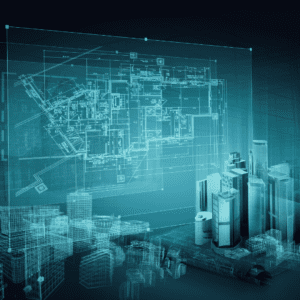The red tape and bureaucratic processes involved in remodeling or constructing new buildings can be a significant source of frustration. But what if we could streamline the entire design process? This article explores how AI is revolutionizing architecture, making design faster, more efficient, and environmentally friendly.
Buildings are not just structures; they are integral to how we inhabit this planet. Architects play a crucial role in designing our living spaces, ensuring they are creative, functional, sustainable, and resilient. However, the traditional design process is time-consuming and often fraught with obstacles.

How AI is Transforming Architectural Design
Designing a single structure can take anywhere from six to eighteen months, not including the additional time required for meeting environmental regulations and ensuring natural disaster resiliency. This lengthy process is a significant obstacle to efficient construction.
AI has the potential to reduce the time and effort involved in architectural design. Unlike the current perception of AI merely generating static image renders, advanced AI can understand geometric systems and produce modifiable, editable 3D models. This capability gives professionals a significant head start in the building process.
From Text to 3D Model: A Practical Example
Imagine a team of architects crafting an office blueprint with two executive chambers. Their process skips straight from text to a 3D model. Now, with the foundation laid, it’s evident that none of them have encountered an executive who desires a window facing inward toward the open space.
This is where AI steps in, seamlessly modifying the windows to remove that aspect. Progress is evident. While the design layouts are promising, there’s an element still missing. AI can guide the architects in selecting materials, ensuring smart choices are made. However, selecting authentic materials demands careful consideration. The architects must weigh not only the materials themselves but also their environmental and financial impact.
By utilizing AI, they can automatically compute carbon emissions, ensuring their designs are Net Zero compliant. This is increasingly important as over 140 countries have mandated such standards.
Also, AI can optimize the usage of natural daylight and the distribution of furniture, enhancing the functionality and comfort of the space. These smart choices lead to more efficient and pleasant living and working environments.
AI in Emergency Situations
In times of disaster, such as a devastating earthquake, the need for rapid construction is critical. AI can significantly speed up the design and construction process, providing urgently needed structures in a fraction of the traditional time. Moreover, AI can help forecast and prevent such disasters in the future.
AI is set to revolutionize the field of architecture. From accelerating design processes to making smart material choices and enhancing disaster preparedness, AI offers numerous benefits. As we continue to integrate AI into architectural practices, we can expect faster, more efficient, and sustainable building solutions.
To remain current in your field, it’s essential to embrace AI technology. NextBrain AI provides invaluable strategic insights from the data across various domains. Schedule a demo today to experience its power firsthand.


 +34 910 054 348
+34 910 054 348 +44 (0) 7903 493 317
+44 (0) 7903 493 317